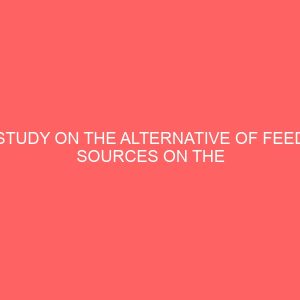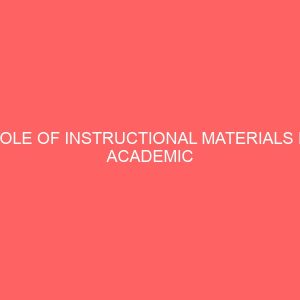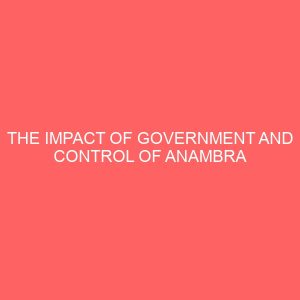Description
CHAPTER ONE
INTRODUCTION
1.1 Background of the Study
This study is on the alternative of feed sources on the growth of catfish fry using artemia, artemia and crayfish (prawn), crayfish (prawn). According to the Food & Agriculture organization (FAO, 2014) fish and fishery products play a vital role in food security and meeting the nutritional needs of the human population in developing and developed countries. Fish is a good source of high value protein as well as an essential source of micronutrients including vitamins, minerals and polyunsaturated omega-3 fatty acids (FAO, 2012). The annual average global per capita consumption of fish increased from 9.9 kg to 17 kg between the years 1960 and 2000. It further expanded to 18.9 kg in 2010 (FAO, 2014). In the same year fish provided the global population with 16.7 percent of their animal protein intake and 6.5 percent of all the protein consumed (FAO, 2014). The world population is forecast to reach 9 billion by the year 2050 (Msangi et al., 2013) while fish production from capture fisheries is believed to be stagnant or declining (Rana et al., 2009). Therefore, aquaculture is widely acknowledged as a way to meet higher future food requirements for the human population (Tidwell, 2012).
Indeed aquaculture has become the fastest expanding food production sector (FAO, 2006). According to Delgado et al. (2003) the contribution of aquaculture to global food fish production rose from 7 percent in 1973 to 12 percent in 1985 and by 1997 it increased to more than 30 percent. Further, it rose from 34.5 percent in 2006 to 36.9 percent in 2008 (FAO, 2010). On the other hand, global fish production from aquaculture has increased from 32.4 million tonnes in 2000 to 66.6 million tonnes in 2012 (FAO, 2014). However, the implementation of aquaculture is limited by its heavy reliance on fishmeal and fish oil for aquafeed production (Klinkhardt, 2007).
Fishmeal is derived from capture fisheries which is a finite resource (Delgado et al., 2003). It is manufactured by cooking, pressing, drying and milling of wild caught fish (Delgado et al., 2003). Fishmeal has unique nutritional properties: it is highly palatable and its amino acid profile is ideal for most aquatic species. However, certain types of fishmeal contain gizzerosine (Okazaki et al., 1983) which was reported to cause gizzard erosion in mono-gastric animals especially poultry (Masumura et al., 1985). The toxicity of gizzerosine to fish is species-specific among other factors (Watanabe et al., 1987; Dong et al., 1994; Reyes-Sosa & Castellanos-Mollina, 1985). Nevertheless, the quality of fishmeal is related to the source of fish or fishery by-products used as well as on the processing method applied (Heuzé et al., 2014).
Fishmeal production fluctuates annually which is largely affected by the El Niño phenomenon (FAO, 2012). Fishmeal production dropped from 30.2 million tonnes (MT) in 1994 to 14.0 MT in 2010 (FAO, 2012). In 2011 its production increased to 19.4 MT and dropped again to 16.3 MT in 2012 (FAO, 2014). The reducing supply and high demand for fishmeal from various animal husbandry sectors have escalated fishmeal prices until in 2013 it reached US $1,919 per tonne (FAO, 2014). There is currently ongoing research in an attempt to reduce dependence on fishmeal in fish diets. Therefore, it is justifiable to investigate insect based proteins to augment current fish feeds.
Fish growth and survival rate depend on the kind of feed, feeding frequency, feed intake and the fish’s ability to absorb the nutrients. Starter feeds are important in the growth of African catfish (C. gariepinus) larvae. Live feeds such as Artemia, rotifers, copepods, cladocerans have been employed with successful outcomes in feeding most fry of C. gariepinus .
1.2 Statement of problem
Fish foods are a good source of quality protein and other essential nutrients required in human diets. The health benefits of eating fish have been extensively reported. Fish provide the global population with 17% of animal protein intake. However, fish supply from capture fisheries is believed to be stagnant or declining and is not likely to increase in the future. Aquaculture is widely acknowledged as having the potential to fill this gap in food fish production for the human population. One of aquaculture’s drawbacks is heavy reliance on non-sustainable protein sources for aqua feed.
Animal feed, today, is becoming costly due to the competition between man and animal for protein source (Adeparusi and Agbede, 2005). The source of fish feed is very expensive especially imported ones because of high rate of foreign exchange. The use of commercial pelleted fish feed expensive as it accounts for about 60% – 80% of the recurrent cost of fish farming venture (Madu and Ufodike 2003). Moreover, the limited supply of raw materials for the feed industry has resulted in a continuous increase in the cost of production, causing a phenomenal rise in the unit cost of animal products. Thus, these products have become too expensive for the majority of the population (Adesope, 2000; Ebenebe, 2000). Artemia and crayfish can both serve as an alternative for catfish source of food.
1.3 Objective of the study
This study aims at achieving the following aims;
- To examine the effect of Artemia as a food source for Catfish feeding on the growth of Catfish.
- To examine the effect of Crayfish (pawn) as a food source for Catfish feeding on the growth of Catfish.
- To examine the effect of Artemia and Crayfish (prawn) as a food source for Catfish feeding on the growth of Catfish.
1.4 Research questions
- What is the effect of Artemia as a food source for Catfish feeding on the growth of Catfish?
- What is the effect of Crayfish (pawn) as a food source for Catfish feeding on the growth of Catfish?
- What is the effect of Artemia and Crayfish (prawn) as a food source for Catfish feeding on the growth of Catfish?
1.5 Research hypothesis
- There is no significant effect of Artemia as a food source for Catfish feeding on the growth of Catfish.
- There is no significant effect of Crayfish (pawn) as a food source for Catfish feeding on the growth of Catfish.
- There is no significant effect of Artemia and Crayfish (prawn) as a food source for Catfish feeding on the growth of Catfish.
1.6 Significance of the Study
This study is significant as it will inform farmers on the effectiveness of Artermia and Crayfish in the growth of Catfish if used as an alternative food source. It would inform producers of agrofeeds for catfish on the responsiveness of catfish to Artemia and Crayfish and including it in the formulation process of the feeds if found effective. It will also serve as a basis for other research related to this topic.
1.7 Scope of the study
The study made use of One hundred and fifty African catfish (Clarias gariepinus), for a study period of 2 weeks.
1.8 Limitation of the Study
This study is limited to the African Catfish as that was the specie used for this research. It was limited to 2 weeks of study as the time for cost for feeding was overbearing.








Reviews
There are no reviews yet.